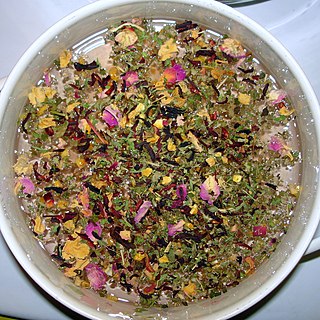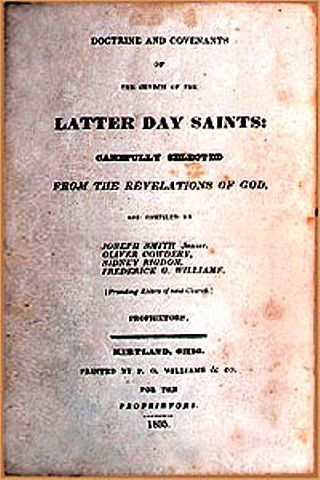
Caffeine is a central nervous system (CNS) stimulant of the methylxanthine class. It is mainly used recreationally as a cognitive enhancer, increasing alertness and attentional performance. Caffeine acts by blocking binding of adenosine to the adenosine A1 receptor, which enhances release of the neurotransmitter acetylcholine. Caffeine has a three-dimensional structure similar to that of adenosine, which allows it to bind and block its receptors. Caffeine also increases cyclic AMP levels through nonselective inhibition of phosphodiesterase.

Cocaine is a central nervous system (CNS) stimulant mainly used recreationally for its euphoric effects. It is primarily obtained from the leaves of two Coca species native to South America, Erythroxylum coca and Erythroxylum novogranatense. After extraction from coca leaves and further processing into cocaine hydrochloride, the drug is often snorted, applied topically to the mouth, or dissolved and injected into a vein. It can also then be turned into free base form, in which it can be heated until sublimated and then the vapours can be inhaled. Cocaine stimulates the reward pathway in the brain. Mental effects may include an intense feeling of happiness, sexual arousal, loss of contact with reality, or agitation. Physical effects may include a fast heart rate, sweating, and dilated pupils. High doses can result in high blood pressure or high body temperature. Effects begin within seconds to minutes of use and last between five and ninety minutes. As cocaine also has numbing and blood vessel constriction properties, it is occasionally used during surgery on the throat or inside of the nose to control pain, bleeding, and vocal cord spasm.

A drink or beverage is a liquid intended for human consumption. In addition to their basic function of satisfying thirst, drinks play important roles in human culture. Common types of drinks include plain drinking water, milk, juice, smoothies and soft drinks. Traditionally warm beverages include coffee, tea, and hot chocolate. Caffeinated drinks that contain the stimulant caffeine have a long history.

Recreational drug use indicates the use of one or more psychoactive drugs to induce an altered state of consciousness either for pleasure or for some other casual purpose or pastime by modifying the perceptions and emotions of the user. When a psychoactive drug enters the user's body, it induces an intoxicating effect. Generally, recreational drugs are divided into three categories: depressants ; stimulants ; and hallucinogens.

Herbal teas, also known as herbal infusions and less commonly called tisanes, are beverages made from the infusion or decoction of herbs, spices, or other plant material in hot water. Oftentimes herb tea, or the plain term tea, is used as a reference to all sorts of herbal teas. Many herbs are used in herbal medicine. Some herbal blends contain actual tea.

Coca is any of the four cultivated plants in the family Erythroxylaceae, native to western South America. Coca is known worldwide for its psychoactive alkaloid, cocaine.

John Stith Pemberton was an American pharmacist and Confederate States Army veteran who is best known as the inventor of Coca-Cola. In May 1886, he developed an early version of a beverage that would later become Coca-Cola, but sold his rights to the drink shortly before his death.

Pemberton's French Wine Coca was a coca wine created by the druggist John Pemberton, the inventor of Coca-Cola. It was an alcoholic beverage, mixed with coca, kola nut, and damiana. The original recipe contained the ingredient cocaethylene, which was removed, just like the alcohol had before it, in 1899 because of a social stigma surrounding the rampant use of cocaine at the time.

Coca eradication is a strategy promoted by the United States government starting in 1961 as part of its "War on Drugs" to eliminate the cultivation of coca, a plant whose leaves are not only traditionally used by indigenous cultures but also, in modern society, in the manufacture of cocaine. The strategy was adopted in place of running educational campaigns against drug usage. The prohibitionist strategy is being pursued in the coca-growing regions of Colombia, Peru, and formerly Bolivia, where it is highly controversial because of its environmental, health and socioeconomic impact. Furthermore, indigenous cultures living in the Altiplano, such as the Aymaras, use the coca leaf in many of their cultural traditions, notably for its medicinal qualities in alleviating the feeling of hunger, fatigue and headaches symptomatic of altitude sicknesses. The growers of coca are named Cocaleros and part of the coca production for traditional use is legal in Peru, Bolivia and Chile.

The "Word of Wisdom" is the common name of an 1833 section of the Doctrine and Covenants, a book considered by many churches within the Latter Day Saint movement to be a sacred text. The section defines beliefs regarding certain drugs, nutritious ingredients in general, and the counsel to eat meat sparingly; it also offers promises to those who follow the guidance of the Word of Wisdom.

An energy drink is a type of drink containing stimulant compounds, usually caffeine, which is marketed as providing mental and physical stimulation. They may or may not be carbonated and may also contain sugar, other sweeteners, herbal extracts, taurine, and amino acids. They are a subset of the larger group of energy products, which includes bars and gels, and distinct from sports drinks, which are advertised to enhance sports performance. There are many brands and varieties in this drink category.

A caffeinated drink, or caffeinated beverage, is a drink that contains caffeine, a stimulant that is legal practically all over the world.

Caffeine dependence is the condition of having a substance dependence on caffeine, a commonplace central nervous system stimulant drug which occurs in nature in coffee, tea, yerba mate, cocoa, and other plants. Caffeine is also an additive in many consumer products, including beverages such as caffeinated alcoholic beverages, energy drinks, and colas.

Ilex guayusa is a species of tree of the holly genus, native to the Amazon Rainforest. One of four known caffeinated holly trees, the leaves of the guayusa tree are harvested fresh and brewed like a tea for their stimulative effects.

Ypadú or ypadu is an unrefined, unconcentrated powder made from toasted coca leaves and the ash of various other plants. It is traditionally prepared and consumed by indigenous tribes in the Northwest Amazon. Like coca teas consumed in Peru to adapt to sickness induced by high elevation, it has a long ethnobotanical history and cultural associations.
Coca may refer to any of the four cultivated plants which belong to the family Erythroxylaceae.

Agwa de Bolivia, often shortened to AGWA, is a herbal liqueur made with Bolivian coca leaves and 37 other natural herbs and botanicals including green tea, ginseng, and guarana, distilled and produced in Amsterdam by BABCO Europe Limited. The coca leaf content of the drink, like that in Coca-Cola, has the cocaine alkaloids removed during production, and does not contain the drug.
Coca Colla is an energy drink produced in Bolivia with the use of coca extract as its base. It was launched on the Bolivian market in La Paz, Santa Cruz and Cochabamba in April of 2010. Both the name and ingredients are similar to Coca-Cola. The release of this product is part of the process of the industrialization of coca followed by the Morales Administration. The "Colla" component of the name comes from Qullasuyu, the southern area of the Inca empire which included the western part of Bolivia. The term Qulla is nowadays used to name the Aymara and Quechua, indigenous people of Bolivia which make a traditional use of coca leaves.

Matte Leão is a Brazilian infusion and tea brand, now owned by The Coca-Cola Company. The spelling Matte is archaic, but preserved in the trademark; the currently correct Portuguese spelling for the herb and the derived beverage is mate. Matte Leão offers a range of over 100 types of infusions.

















